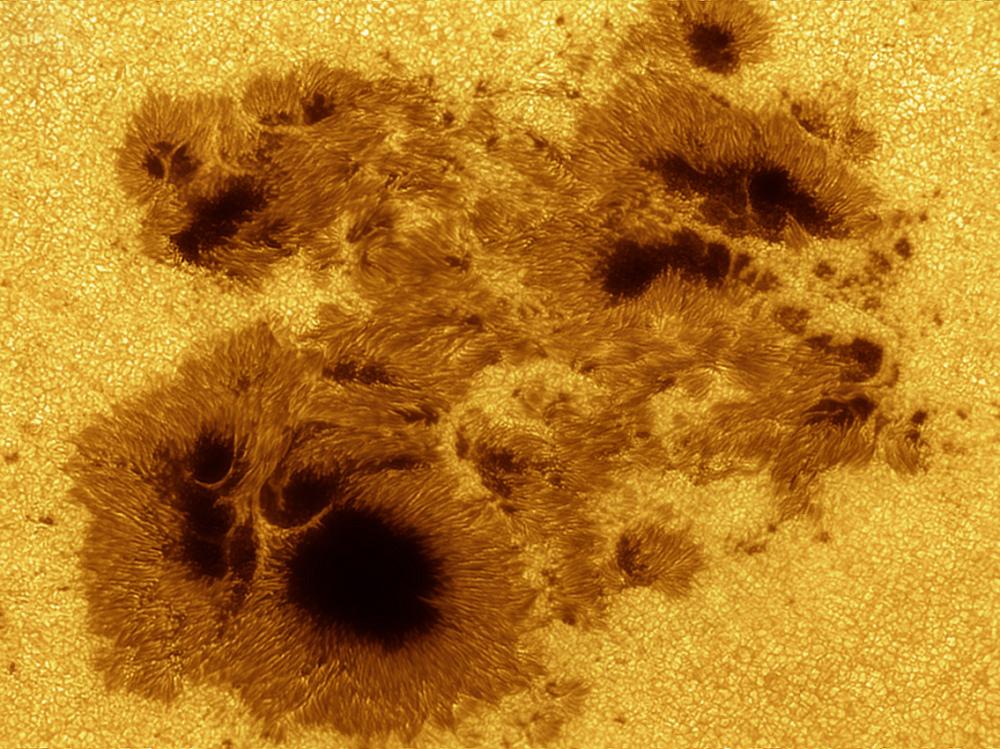As sunspots go, AR 2192 is, as astronomer Phil Plait has noted, “freakishly huge.”
Discovery News says: “Amateur astronomers have been wowed by a vast sunspot that has rotated to face Earth, the largest since this solar cycle began in 2008, and solar observatories (on the ground and orbiting Earth) are closely monitoring the region.”
How vast is it? Discovery writes that “the sunspot located at the base of AR 2192 has swelled to over 80,000 miles across — Jupiter could almost fit inside the sunspot’s mottled diameter.”
The sunspot is particularly interesting because of its potential to wreak havoc here on Earth.
According to Universe Today: “[As] the Sun rotates this monster into our line of sight, possibilities for Earth-directed flares and coronal mass ejections increase as do geomagnetic storms, the bringer of auroras.”
(For a good overview on sunspots, solar flares and CMEs, Space.com has this primer.)
“This particular active region … has been rumbling with intense flare activity, recently exploding with 2 X-class flares, causing some short-lived high-frequency (HF) radio blackouts around the globe,” Discovery says.
Just last month, Earth caught a glancing blow from an X-class flare, triggering impressive auroras.
AR 2192 is, as are most sunspots, easily visible to the properly shielded (that means using a welder’s helmet of grade 14 or higher, or a telescope “sun filter”) naked eye. Through a small telescope (again, equipped with a sun filter), you can see a lot more detail, including “the mix of dark umbras scattered amid weirdly sculpted penumbral ‘islands,’ ” says Universe Today.
9(MDA3MTA1NDEyMDEyOTkyNTU3NzQ2ZGYwZg004))
